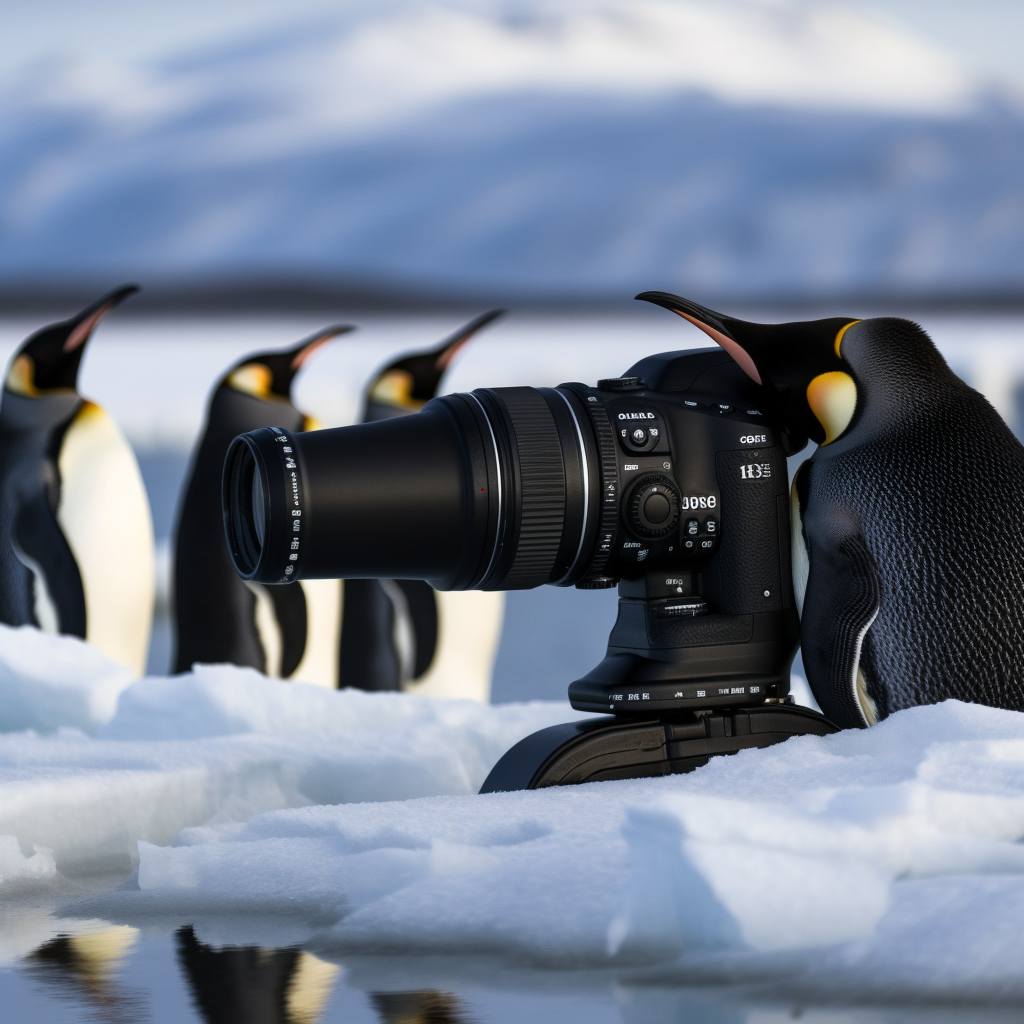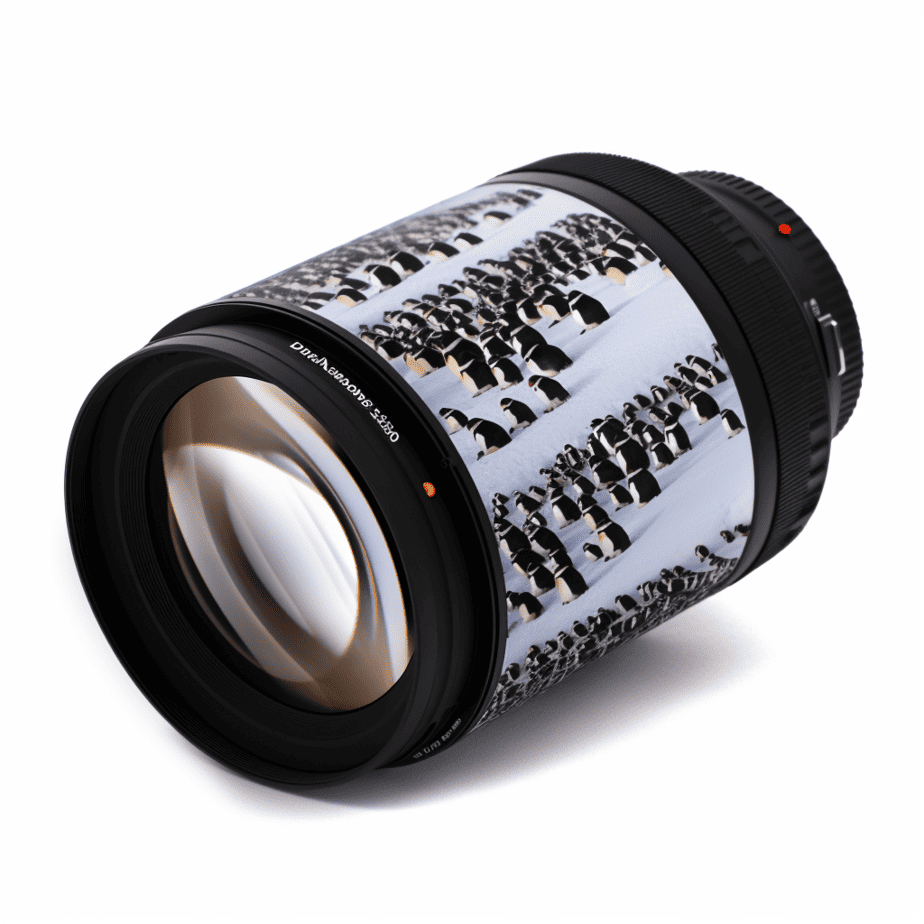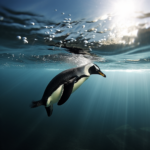Penguins are fascinating creatures that have adapted to life in the water. They are known for their distinctive waddling walk on land, but it is in the ocean where they truly shine. These flightless birds are incredibly agile swimmers, capable of reaching impressive speeds underwater. In this article, we will explore just how fast penguins can swim and what enables them to move so swiftly through the water. Whether you’re a fan of these adorable creatures or simply curious about their abilities, join us as we dive into the world of penguin swimming.
Key Takeaways
- Penguins can swim at impressive speeds, with some species reaching up to 22 miles per hour (35 kilometers per hour).
- Their streamlined bodies, webbed feet, and strong flippers enable them to navigate through water with ease.
- Penguins use a technique called “porpoising” to swim quickly, where they leap out of the water and dive back in to reduce drag.
- The Gentoo penguin holds the record for the fastest swimming penguin, reaching speeds of up to 22 miles per hour (35 kilometers per hour).
- Swimming at such high speeds allows penguins to efficiently hunt for food and evade predators in the water.
The Speed of Penguins: An Overview

Penguins are fascinating creatures that have adapted to life in the water. They are known for their unique swimming abilities and agility, which allow them to navigate through the ocean with ease. In this section, we will explore the speed of penguins and shed light on their impressive swimming capabilities.
A. How Fast Do Penguins Swim: A General Perspective
When it comes to swimming, penguins are quite impressive. While their speed may vary depending on the species, penguins can swim at an average speed of around 4 to 7 miles per hour (6 to 11 kilometers per hour). This may not sound very fast compared to other marine animals, but considering their body structure and size, it is quite remarkable.
Penguins use their wings as flippers to propel themselves through the water. These flippers, along with their streamlined bodies, help them move efficiently and swiftly. They can swim by using a technique called “porpoising,” where they leap out of the water and dive back in, reducing drag and increasing their speed.
B. How Fast Can Penguins Swim Underwater: The Hidden Speed
While penguins are known for their swimming abilities on the surface, their true speed is often hidden beneath the waves. Underwater, penguins can reach even higher speeds, thanks to their streamlined bodies and powerful flippers.
Some penguin species, such as the Emperor Penguin and the Gentoo Penguin, are known to reach speeds of up to 15 miles per hour (24 kilometers per hour) underwater. These speeds allow them to chase after prey and cover larger distances in search of food.
To achieve such speeds, penguins use a combination of their flippers and their bodies. They use their wings to “fly” through the water, propelling themselves forward with each stroke. Their bodies are designed to minimize drag, allowing them to move swiftly and efficiently.
C. Are Penguins the Fastest Swimmers: A Comparative Analysis
While penguins are impressive swimmers, they are not the fastest creatures in the ocean. Other marine animals, such as dolphins and sailfish, can reach much higher speeds. However, when it comes to bird swimming, penguins are unmatched in their agility and underwater speed.
Penguins have evolved to be exceptional swimmers, and their swimming technique is optimized for their environment. Their adaptations, such as their streamlined bodies, webbed feet, and powerful flippers, allow them to navigate through the water with precision and speed.
In comparison to other seabirds, penguins are much faster swimmers. Their ability to dive deep and swim at high speeds enables them to hunt for fish and other marine creatures effectively. This gives them an advantage in their natural habitat and contributes to their survival as skilled hunters.
In conclusion, penguins are remarkable swimmers with impressive speed and agility. While they may not be the fastest creatures in the ocean, their swimming abilities are unmatched among birds. Their adaptations and swimming techniques allow them to thrive in their aquatic habitat, making them a fascinating example of nature’s ingenuity.
The Speed of Different Penguin Species
Penguins are known for their incredible swimming abilities, allowing them to navigate through the water with ease. Each penguin species has its own unique adaptations that enable them to swim at different speeds and thrive in their respective habitats. Let’s take a closer look at the speed of various penguin species and how they have adapted to their environments.
A. The Adelie Penguin: Speed and Adaptation
The Adelie penguin, native to Antarctica, is a proficient swimmer. With a streamlined body and strong flippers, it can reach impressive speeds in the water. Adelie penguins have been recorded swimming at speeds of up to 8 miles per hour (13 kilometers per hour). These agile birds use their wings to propel themselves forward, gliding effortlessly through the icy waters. Their adaptability to the harsh Antarctic environment allows them to thrive in temperatures as low as -40 degrees Celsius.
B. The African Penguin: A Swift Swimmer
The African penguin, also known as the jackass penguin, is found along the coastlines of South Africa and Namibia. Despite being a relatively small penguin species, it is a swift swimmer. African penguins can reach speeds of up to 12 miles per hour (20 kilometers per hour) in the water. Their sleek bodies and strong flippers enable them to maneuver quickly, making them efficient hunters in the ocean. These penguins are well-adapted to warmer waters and can tolerate temperatures as high as 30 degrees Celsius.
C. The Macaroni Penguin: Speed in Cold Waters
The Macaroni penguin, named for its distinctive yellow crest, is a fast swimmer, particularly in the cold waters of the Southern Ocean. These penguins can swim at speeds of around 14 miles per hour (22 kilometers per hour). Their long, slender bodies and powerful flippers allow them to navigate through the frigid waters with ease. Macaroni penguins are known for their energetic and agile swimming style, which helps them catch their preferred prey of krill and small fish.
D. The Gentoo Penguin: The Speed Champion
When it comes to swimming speed, the Gentoo penguin takes the crown. These impressive birds can reach speeds of up to 22 miles per hour (35 kilometers per hour) in the water, making them the fastest swimming penguins. With their streamlined bodies and long flippers, Gentoo penguins are built for speed. They use their powerful wing strokes to propel themselves forward, allowing them to cover long distances in search of food. Gentoo penguins are primarily found in the sub-Antarctic regions, where they thrive in a variety of habitats.
E. The Little Penguin: Small but Fast
Don’t let their small size fool you – the Little penguin, also known as the Fairy penguin, is a quick swimmer. These adorable penguins, standing at just over a foot tall, can swim at speeds of up to 7 miles per hour (11 kilometers per hour). Their small bodies and short flippers make them agile in the water, allowing them to navigate through rocky shorelines and shallow waters with ease. Little penguins are found along the coasts of Australia and New Zealand, where they hunt for small fish and squid.
F. The King Penguin: A Regal Swimmer
The King penguin, the second-largest penguin species after the Emperor penguin, is a graceful swimmer. Although not as fast as some of its counterparts, King penguins can still reach speeds of up to 5 miles per hour (8 kilometers per hour) in the water. These majestic birds have a robust build and strong flippers that enable them to swim efficiently. King penguins are primarily found on sub-Antarctic islands, where they form large colonies and rely on their swimming abilities to find food in the surrounding ocean.
G. The Humboldt Penguin: Speed in Warm Waters
The Humboldt penguin, native to the coasts of Peru and Chile, is well-adapted to warmer waters. These penguins can swim at speeds of up to 12 miles per hour (20 kilometers per hour). With their streamlined bodies and agile flippers, Humboldt penguins are adept at maneuvering through the ocean. They primarily feed on small fish and squid, using their swimming speed to their advantage when hunting for prey.
In conclusion, penguins are remarkable swimmers, each species with its own unique adaptations and swimming abilities. From the swift African penguin to the speed champion Gentoo penguin, these birds have evolved to thrive in diverse environments. Whether in icy Antarctic waters or warmer coastal regions, penguins showcase their agility and survival skills through their impressive swimming speeds.
The Galapagos Penguin: Speed in Tropical Seas

The Galapagos Penguin is a fascinating species of penguin that has adapted to life in the tropical waters of the Galapagos Islands. While penguins are typically associated with cold climates, the Galapagos Penguin has found a way to thrive in the warmer waters of the equator. One aspect of their behavior that is particularly interesting is their swimming speed.
Agile Swimmers in Warm Waters
The Galapagos Penguin is known for its agility in the water. Despite being one of the smallest penguin species, they are excellent swimmers and can reach impressive speeds. These penguins have streamlined bodies and strong flippers, which allow them to navigate through the water with ease. Their small size and sleek physique make them well-suited for swimming at high speeds.
Speedy Penguins
While the Galapagos Penguin may not be the fastest swimmer among penguin species, they can still reach impressive speeds. On average, these penguins can swim at speeds of around 4 to 6 miles per hour (6 to 9 kilometers per hour). This may not seem fast compared to other marine animals, but for a penguin, it is quite impressive.
Adaptations for Speed
The Galapagos Penguin has several adaptations that contribute to its swimming abilities. Their wings, although modified for swimming rather than flying, help propel them through the water. Penguins use their wings to “fly” underwater, using a technique called “porpoising.” This involves using their wings to push off the water and propel themselves forward. Their streamlined bodies and strong flippers also aid in their ability to swim quickly and efficiently.
Hunting Techniques
The Galapagos Penguin’s swimming speed is not only important for their survival but also for their hunting techniques. These penguins primarily feed on small fish, such as anchovies and sardines, which require them to be agile and quick in the water. Their ability to swim at high speeds allows them to chase down their prey and catch it with precision.
A Delicate Balance
While the Galapagos Penguin may not be the fastest swimmer in the penguin world, their swimming speed is impressive considering their size and the warm waters they inhabit. It is a testament to their adaptability and survival skills. These penguins have found a delicate balance between their need for speed and their ability to navigate the tropical seas.
In conclusion, the Galapagos Penguin may not be the fastest swimmer among penguin species, but they are certainly agile and efficient in the water. Their streamlined bodies, strong flippers, and unique swimming techniques allow them to reach speeds of around 4 to 6 miles per hour. This enables them to hunt for food and navigate the warm waters of the Galapagos Islands with ease. The Galapagos Penguin is a remarkable example of how a species can adapt to its environment and thrive in unexpected ways.
The Science Behind Penguins’ Speed

A. Why Do Penguins Swim So Fast: The Biological Perspective
Penguins are fascinating creatures that have adapted to life in the water. Their ability to swim at impressive speeds is a result of various biological factors. Let’s explore why penguins are such fast swimmers.
1. Streamlined Body Shape
One of the key reasons why penguins can swim so fast is their streamlined body shape. Their bodies are designed to minimize drag in the water, allowing them to move through the water with ease. The shape of their bodies resembles that of a torpedo, with a tapered head and a sleek, elongated body. This shape helps reduce resistance as they glide through the water, enabling them to swim at high speeds.
2. Powerful Flippers
Another factor that contributes to penguins’ speed in the water is their powerful flippers. Penguins have evolved flippers that are perfectly adapted for swimming. These flippers, which are modified wings, provide the necessary propulsion to propel the penguins forward. The flippers are strong and flexible, allowing the penguins to generate a significant amount of thrust with each stroke. This enables them to swim at impressive speeds, reaching up to 20 miles per hour (32 kilometers per hour) in some species.
3. Efficient Wing-Like Movements
While penguins may not be able to fly in the air, their wing-like movements in the water are highly efficient. Penguins use their flippers to “fly” through the water, utilizing a technique called “wing-propelled diving.” This technique involves using their flippers to push against the water, propelling themselves forward. The combination of their streamlined body shape and powerful flippers allows them to move through the water with remarkable agility and speed.
B. How Fast Can Penguins Dive: The Impact of Speed on Diving
Penguins’ swimming abilities are not only impressive on the surface but also underwater. These incredible birds can dive to great depths and swim at high speeds while hunting for food. Let’s delve into the impact of speed on penguins’ diving abilities.
1. Underwater Speed
When penguins dive, they can reach impressive speeds underwater. While their swimming speed on the surface may vary depending on the species, penguins can swim even faster underwater. Some species, like the Gentoo Penguin, can reach speeds of up to 22 miles per hour (35 kilometers per hour) while diving. This speed allows them to quickly chase after prey and cover larger distances in search of food.
2. Adaptations for Diving
Penguins have several adaptations that enable them to excel at diving. One such adaptation is their ability to control their buoyancy. By adjusting the amount of air in their feathers, penguins can either float or dive deeper into the water. This control over buoyancy allows them to navigate different depths with ease and swim at varying speeds.
3. Hunting Techniques
Penguins employ various hunting techniques while underwater, taking advantage of their speed and agility. Some species, like the Emperor Penguin, use a technique called “porpoising” to catch fish. Porpoising involves leaping out of the water and diving back in, allowing the penguins to cover greater distances and surprise their prey. Other species, such as the Adélie Penguin, use a “stealth” approach, swimming silently to sneak up on their prey. These hunting techniques, combined with their swimming speed, make penguins formidable predators in the ocean.
In conclusion, penguins are exceptional swimmers, capable of reaching impressive speeds both on the surface and underwater. Their streamlined body shape, powerful flippers, and efficient wing-like movements contribute to their remarkable swimming abilities. Whether they are gliding through the water or diving to great depths, penguins showcase their agility and adaptability in their marine habitat.
Penguins Vs. Humans: A Speed Comparison
A. How Fast Can Penguins Swim Compared to Humans
When it comes to swimming, penguins are truly remarkable creatures. These flightless birds have adapted to life in the water and have developed impressive swimming abilities. But how fast can penguins swim compared to humans?
While humans are not built for swimming like penguins, we can still hold our own in the water. The average human swimming speed is around 2 miles per hour, which is a decent pace for most recreational swimmers. However, when it comes to pure speed, penguins have the upper hand.
Penguins are known for their incredible underwater speed. Depending on the species, penguins can swim at speeds ranging from 4 to 12 miles per hour. The fastest penguin species, the Gentoo Penguin, can reach speeds of up to 22 miles per hour in short bursts. This is much faster than the average human swimmer.
B. Can Penguins Swim Faster Than Humans
Yes, penguins can swim faster than humans. Their streamlined bodies and powerful flippers allow them to move through the water with ease. Penguins use a technique called “wing-propelled” swimming, where they use their wings to “fly” through the water. This technique allows them to reach impressive speeds and maneuverability.
In addition to their swimming technique, penguins have other adaptations that contribute to their fast swimming abilities. Their bodies are designed to minimize drag in the water, with a streamlined shape and dense feathers that help reduce friction. Their wings, although not designed for flight, are perfectly suited for underwater propulsion.
It’s important to note that penguins are built for life in the water, while humans are not. Penguins have evolved over millions of years to excel in their aquatic environment, whereas humans are primarily land-dwelling creatures. So, while penguins may be faster swimmers, humans have other strengths that allow us to thrive on land.
In conclusion, penguins are incredibly agile and fast swimmers, outpacing humans in the water. Their adaptations and swimming techniques make them well-suited for life in the ocean. However, it’s important to appreciate the unique abilities of both penguins and humans, as we each have our own strengths and adaptations that allow us to thrive in our respective environments. Conclusion
In conclusion, penguins are remarkable swimmers, capable of reaching impressive speeds in the water. These flightless birds have evolved over time to become highly adapted for life in the ocean. With their streamlined bodies, webbed feet, and strong flippers, penguins are built for speed and agility underwater. They can swim at an average speed of 4 to 7 miles per hour, but some species can reach even higher speeds. The Gentoo penguin, for example, can swim at speeds of up to 22 miles per hour, making it one of the fastest swimming birds in the world. The Emperor penguin, on the other hand, may not be as fast, but it can dive to incredible depths, reaching up to 1,750 feet below the surface. These impressive swimming abilities allow penguins to hunt for food, evade predators, and navigate through their marine habitats with ease. Overall, penguins are truly remarkable creatures, showcasing their incredible swimming skills in their natural habitats.
Frequently Asked Questions
How fast do penguins swim?
Penguins are known for their impressive swimming abilities. On average, most penguins swim at speeds of 4-7 miles per hour (mph). However, the speed can vary depending on the species and the situation.
How fast can penguins swim underwater?
Penguins are aquatic birds that are highly adapted to life in the water. Their underwater speed can reach up to 22 mph, depending on the species. This is due to their streamlined bodies and strong flippers, which allow them to maneuver quickly and efficiently underwater.
Why do penguins swim so fast?
Penguins swim so fast due to their unique adaptations. Their streamlined bodies, strong flippers, and dense feathers allow them to move through the water with great speed and agility. This speed is crucial for hunting prey and escaping predators in their marine habitat.
How fast can Adelie penguins swim?
Adelie penguins, a species native to the Antarctic, can swim at speeds of up to 5 mph. Their swimming speed, along with their agility and hunting techniques, make them effective predators in their icy habitat.
How fast can African penguins swim?
African penguins, also known as Jackass penguins, can reach swimming speeds of up to 12 mph. This speed, combined with their agility and hunting techniques, allows them to thrive in their oceanic habitat.
Are penguins the fastest swimmers?
While penguins are incredibly fast swimmers, they are not the fastest in the animal kingdom. That title goes to the sailfish, which can swim at speeds of up to 68 mph. However, the Gentoo Penguin is the fastest penguin species, reaching speeds of up to 22 mph.
How fast can Gentoo penguins swim?
Gentoo penguins are the fastest penguin species. They can reach swimming speeds of up to 22 mph. This speed is a result of their strong flippers and streamlined bodies, which are perfectly adapted for life in the Antarctic waters.
How fast can penguins dive?
Penguins are not just fast swimmers, but they are also excellent divers. The Emperor Penguin, for example, can dive up to 1,850 feet deep and stay underwater for more than 20 minutes. The speed at which they dive can reach up to 5.6 mph.
Can penguins swim faster than humans?
Yes, penguins can swim significantly faster than humans. The fastest human swimmer clocks in at around 6 mph, while the fastest penguin, the Gentoo, can reach speeds of 22 mph.
What is the fastest penguins can swim?
The fastest recorded speed for a penguin is 22 mph, achieved by the Gentoo Penguin. This makes them one of the fastest swimming birds in the world. Their speed is a testament to their incredible adaptations and survival skills in the harsh Antarctic environment.




